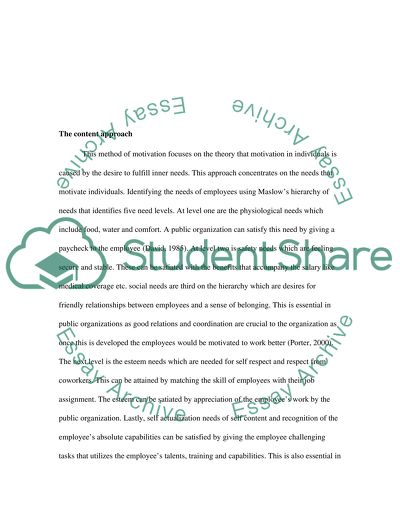Cite this document
(Motivation and Work Behavior Term Paper Example | Topics and Well Written Essays - 1250 words, n.d.)
Motivation and Work Behavior Term Paper Example | Topics and Well Written Essays - 1250 words. Retrieved from https://studentshare.org/human-resources/1542858-motivation-human-resource-management-in-the-public-sector
Motivation and Work Behavior Term Paper Example | Topics and Well Written Essays - 1250 words. Retrieved from https://studentshare.org/human-resources/1542858-motivation-human-resource-management-in-the-public-sector
(Motivation and Work Behavior Term Paper Example | Topics and Well Written Essays - 1250 Words)
Motivation and Work Behavior Term Paper Example | Topics and Well Written Essays - 1250 Words. https://studentshare.org/human-resources/1542858-motivation-human-resource-management-in-the-public-sector.
Motivation and Work Behavior Term Paper Example | Topics and Well Written Essays - 1250 Words. https://studentshare.org/human-resources/1542858-motivation-human-resource-management-in-the-public-sector.
“Motivation and Work Behavior Term Paper Example | Topics and Well Written Essays - 1250 Words”, n.d. https://studentshare.org/human-resources/1542858-motivation-human-resource-management-in-the-public-sector.


